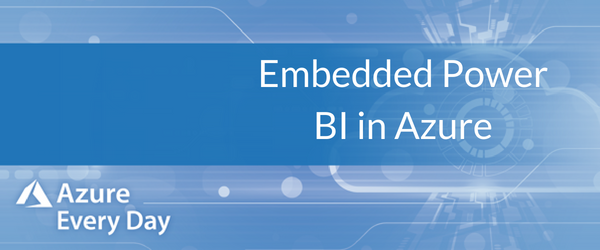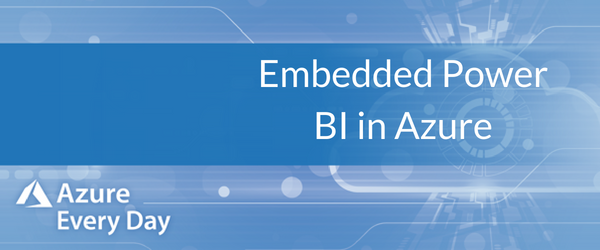Newsletter
Join our blog
Join other Azure, Power Platform and SQL Server pros by subscribing to our blog.


-1.png)
Start with the FREE community plan and get your lifetime access to 20+ courses. Get Instant Access Now!
Need help? Talk to an expert: (904) 638-5743

 In a previous post I discussed 2 ways of embedding Power BI into your applications or website within Azure or Office. Today’s focus is Power BI Embedded in Azure and why it is unique. Some key things to point out:
In a previous post I discussed 2 ways of embedding Power BI into your applications or website within Azure or Office. Today’s focus is Power BI Embedded in Azure and why it is unique. Some key things to point out:
1. Power BI Embedded for Azure is configured in Azure, not Office. You can go in and set up capacity level of this offering in the Azure portal and start working with it whenever you want to.
2. It’s built in smaller increments than the Office version. When I set up my first instance of Power BI Embedded I was a bit taken back by the price point, as it would be over $700 a month. However, since it’s Azure it can be paused, and the capacity can be adjusted as well. But this is important to note.
3. As stated above, it can be paused. This is huge when testing developing solutions. A key part of Azure’s success is the ability to keep cost manageable while developing solutions; if developers remember to pause it, they can experiment while keeping costs down.
4. The actual pricing is in line with Power BI Premium. Power BI Premium from the Office side has 6 options and 2 groups. E1 to E3 are smaller capacities which only support embedded workloads for internal applications; they’re not designed for Power BI self-service supported scale. P1 to P3 are larger capacities in Office which support a more complete solution for BI within your organization.
Azure Embedded has 6 options, A1 to A6, with similar capacities (usually measured in VCPUs and memory) and related pricing. So, there’s no significant difference between the similar product lines and capacities.
Azure Embedded options may be more expensive overall, but there’s not Office overhead and the Azure offering has more flexibility.
5. The Azure version of Power BI uses a master account to access the Power BI services. Unlike Office which is user based so every user is identified and known, Azure supports the equivalent of a system account to interact with the service, which makes it possible to embed in Power BI.
This user account needs to be an AD account with a Power BI Pro license. The same account can be used to create and deploy content, although I typically don’t recommend that, but you can treat it like any other service account you set up. This would allow you to use Power BI Embedded and use those service credentials to access data.
I hope this gave you a better understanding of the Power BI Embedded offering in Azure. If you have any questions around this topic or anything Azure related, you’re in the right place. Click the link below or contact us—we’re here to help.
ABOUT THE AUTHOR
Free Community Plan
private training
Newsletter
Join other Azure, Power Platform and SQL Server pros by subscribing to our blog.


-1.png)
Leave a comment